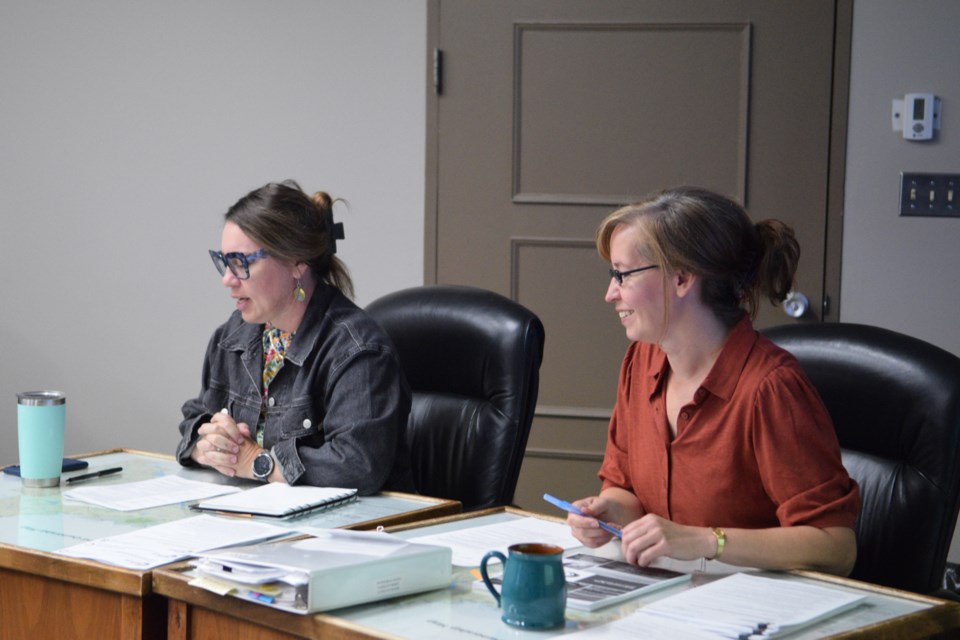BARRHEAD - It was a long time in the making, but County of Barrhead councillors finally put a bow on amending the municipality's land-use (LUB) bylaw.
On Sept. 3, after more than three hours of reviewing a new set of suggested changes to the bylaw by administration, councillors unanimously gave the bylaw third and final reading.
Council gave the first reading to the bylaw on May 7, with the second reading on July 7. However, work on updating the 2010 bylaw started roughly two and a half years ago.
County manager Debbie Oyarzun noted the municipality gave the public several opportunities to provide their input, starting with the first public hearing on the document in early May 2023, followed by a survey two months later. In February 2024, the municipality hosted a land-use bylaw public information session and a public outreach campaign encouraging residents with questions or concerns to contact the county. In mid-March, the municipality hosted two evening public one-on-one information sessions, concluding with a final public hearing in June.
Oyarzun said that councillors held workshops between each public engagement session to discuss what they heard from the public, often incorporating their comments into the working document.
The most significant change from first to the second reading was removal of the requirement to get a building permit for farm accessory buildings up to of 500 square feet.
Municipal Planning Services (MPS) senior planner Jane Dauphinee said most of the recommendations administration was seeking were for clarification rather than changes in the rules.
For instance, she said they recommended removing a statement referring to the Canada Land Inventory (CLI) for the definition of higher-capacity agricultural land.
"The CLI data is really old and not a good indication now of whether the capability [of a parcel of land] is up to the quarter section level," she said, adding the classes in the CLI were overly broad. "It is a huge range, and it is the wrong range. It is backwards, and we are correcting an error in the old land-use bylaw."
The new definition of higher capability agricultural land is a quarter section of at least 50 acres with a farmland assessment productivity rating equal to or greater than 41 per cent.
"It will be easier for us to utilize in situations where we have to determine whether or not a use is consistent with the land-use bylaw," Dauphinee said.
Development officer Jenny Bruns added that the definition is more significant now, given the potential discussions over commercial alternative energy developments on agricultural lands.
Dauphinee added that the administration attempted to expand and clarify which buildings on a farm in an agricultural district did not require a development permit.
She said, as it is currently written in the draft LUB, "buildings for farm use, as defined in the bylaw used in conjunction with the extensive agricultural operation, defined in the bylaw on a parcel 20 acres or greater."
The problem with that, Dauphinee said, is that farm use isn't defined in the land-use bylaw.
"Agricultural operation is," she said. The municipality uses the province's definition under the Alberta Operational Practices Act. "So, it just made more sense to utilize the term in the land-use bylaw than this other term that is open to interpretation," she said.
Dauphinee said it was important to delete "farm use" from the clause, as several rural municipalities have had residents build and not get permits for them, arguing they did not need one as the structure was for agricultural use.
"Sometimes they are, but sometimes they are just really fancy man caves with a lot of storage room for all sorts of toys. Those buildings require a [development] permit, as well as ones for sewage and all sorts of other things," she said. "This is why we wanted to make it very clear in case you have to deal with something that was pushed through [as an agricultural accessory building] and shouldn't have."
Councillors also approved some last-minute amendments to Section 9.15, which regulates the number of permanent dwellings allowed on a parcel under 150 acres in an agricultural district.
Dauphinee said after reviewing the clause, she realized it needed to clearly state how many dwelling units council wanted to allow under the 150-acre threshold. For parcels larger than that, the county permits two permanent residences.
She added that Bruns regularly receives development applications for second dwellings on large parcel.
However, Dauphinee said the only way, under the old bylaw, is to be approved temporarily.
"This means the county then has to track those periods, and the applicants then have to come back and ask to renew the permit expires," she said, adding that the county rarely, if ever, denied the applications. "So we were creating extra steps and costs for people and the municipality that needed to monitor [the dwellings]."
So, instead, the administration proposed an amendment, which councillors unanimously approved. The amendment stated that on parcels under 150 acres, only one permanent dwelling would be allowed unless the second dwelling was a guesthouse suite or a second temporary dwelling, the latter of which would not have to be renewed.

.jpg;w=120;h=80;mode=crop)

